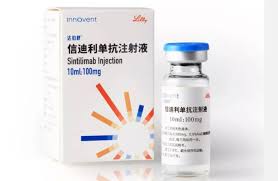All You Need to Know About Life After a Breast Cancer Diagnosis
Dr. Srigopal Mohanty, Medical Oncology, HCG Panda Cancer Hospital, Cuttack When you are first diagnosed with breast cancer; become so much of stressed, anxious, apprehensive. However, the journey doesn't end with the diagnosis itself—it's only the

Dr. Srigopal Mohanty, Medical Oncology, HCG Panda Cancer Hospital, Cuttack
When you are first diagnosed with breast cancer; become so much of stressed, anxious, apprehensive. However, the journey doesn’t end with the diagnosis itself—it’s only the beginning of a path that involves treatment, coping, and rebuilding your life. Whether you’re the patient or a loved one offering support, understanding what happens after a breast cancer diagnosis can help you navigate the challenges and plan for the road ahead.
A breast cancer diagnosis is typically made after a series of tests, including mammogram, ultrasound, biopsy. The next steps involve determining the type, stage, and grade of the cancer, which are critical factors in developing an effective treatment plan.
- Types of Breast Cancer: The most common forms of breast cancer include invasive ductal carcinoma (IDC), invasive lobular carcinoma (ILC), and other less common types
- Molecular subtypes of breast: It is important to know the molecular subtype of breast cancer before planning initial treatment for breast cancer. Different subtypes include luminal A, luminal B, HER2 enrich, Basal type (triple negative).
- Stages: Breast cancer is staged from 1 (invasive, localized) to IV (metastatic, spread to distant parts of the body). Understanding the stage helps doctors determine the treatment strategy.
- Grades: A cancer’s grade refers to how abnormal the cancer cells look under a microscope. Lower grades tend to grow slowly, while higher grades tend to be more aggressive.
- Test for germline BRCA 1&2 gene mutation; if you are having triple negative breast cancer or any breast cancer diagnosed at or before 50 years of age. Because in case if it tests positive, it should also be tested in your siblings, children, parents. Preventive strategies to avoid ovarian cancer in you and also you can receive targeted therapy (PARP inhibitors), which will increase your survival
Treatment Options
Once your type and stage of cancer are determined, treatment options will be discussed with you. Treatment plans comprise multidisciplinary approach, often involving a combination of therapies.
- Surgery: Many people with breast cancer will undergo surgery to remove the tumour. The extent of surgery depends on the cancer’s size, location, and stage. Options include:
- Lumpectomy: Removing the tumour and a small amount of surrounding tissue.
- Mastectomy: Removing the entire breast or both breasts, depending on the case.
- Radiation Therapy: Often used after surgery to eliminate any remaining cancer cells at operated site. Radiation is typically localized to the breast or chest wall area.
- Chemotherapy: This systemic treatment uses drugs to kill cancer cells or stop them from dividing. Chemotherapy may be administered before surgery (neoadjuvant therapy) or after surgery (adjuvant therapy) to shrink the tumour or eliminate any remaining cancer cells.
- Hormone Therapy: For hormone receptor-positive breast cancers, hormone-blocking treatments like tamoxifen or aromatase inhibitors (letrozole/anastrozole/exemestane) can help prevent the cancer from recurrence or progression
- Targeted Therapy: This type of therapy uses drugs or other substances to specifically target cancer cells, while leaving healthy cells mostly unharmed. Anti HER 2 targeted therapies:
- Monoclonal antibody: Trastuzumab, pertuzumab
- Tyrosine kinase inhibitors: lapatinib, neratinib, tucatinib
- Antibody drug conjugate (ADC): Ado-Trastuzumab emtansine (TDM1), trastuzumab deruxtican (TDXd)
- Immunotherapy: Immunotherapy can be an option to boost the body’s immune system to fight cancer. Pembrolizumab is an immunotherapy drug has been reported to improve survival, for which it is recommended in a type of breast cancer, i.e. triple-negative breast cancer (TNBC)
- Emotional and Psychological Impact
A breast cancer diagnosis can be emotionally overwhelming, triggering a wide range of feelings such as anxiety, fear, and sadness. It’s common to worry about the cancer returning back, the side effects of treatment, or how it may affect your future. Many people find it helpful to seek emotional support from family, friends, or professional counsellors who specialize in cancer recovery. Changes to your appearance, like hair loss or surgery, can also impact self-esteem, and support groups or therapy can provide comfort. If feelings of depression or hopelessness persist, it’s crucial to reach out to a mental health professional for help.
Post-Treatment Monitoring and Follow-up Care
After completing treatment, regular follow-up care is vital to monitor for signs of recurrence and manage long-term health. This typically includes periodic check-up, mammogram, or other imaging test, usually every 3-6 months in the first few years. Staying proactive about your health by adopting a balanced diet, staying active, avoiding smoking and alcohol can help reduce the risk of cancer returning. Continued emotional support through counselling or support groups is also important as many survivors continue to navigate the psychological aspects of life after cancer.
Breast cancer remains a significant global health challenge, but advances in early detection, treatment, and awareness are driving progress in the fight against this disease. With continued research, improved screening methods, and personalized therapies, survival rates have steadily improved, offering hope for those affected. It is crucial for individuals to prioritize health as wealth, health education, regular screenings and maintain a healthy lifestyle, to further reduce the incidence and mortality of breast cancer.






